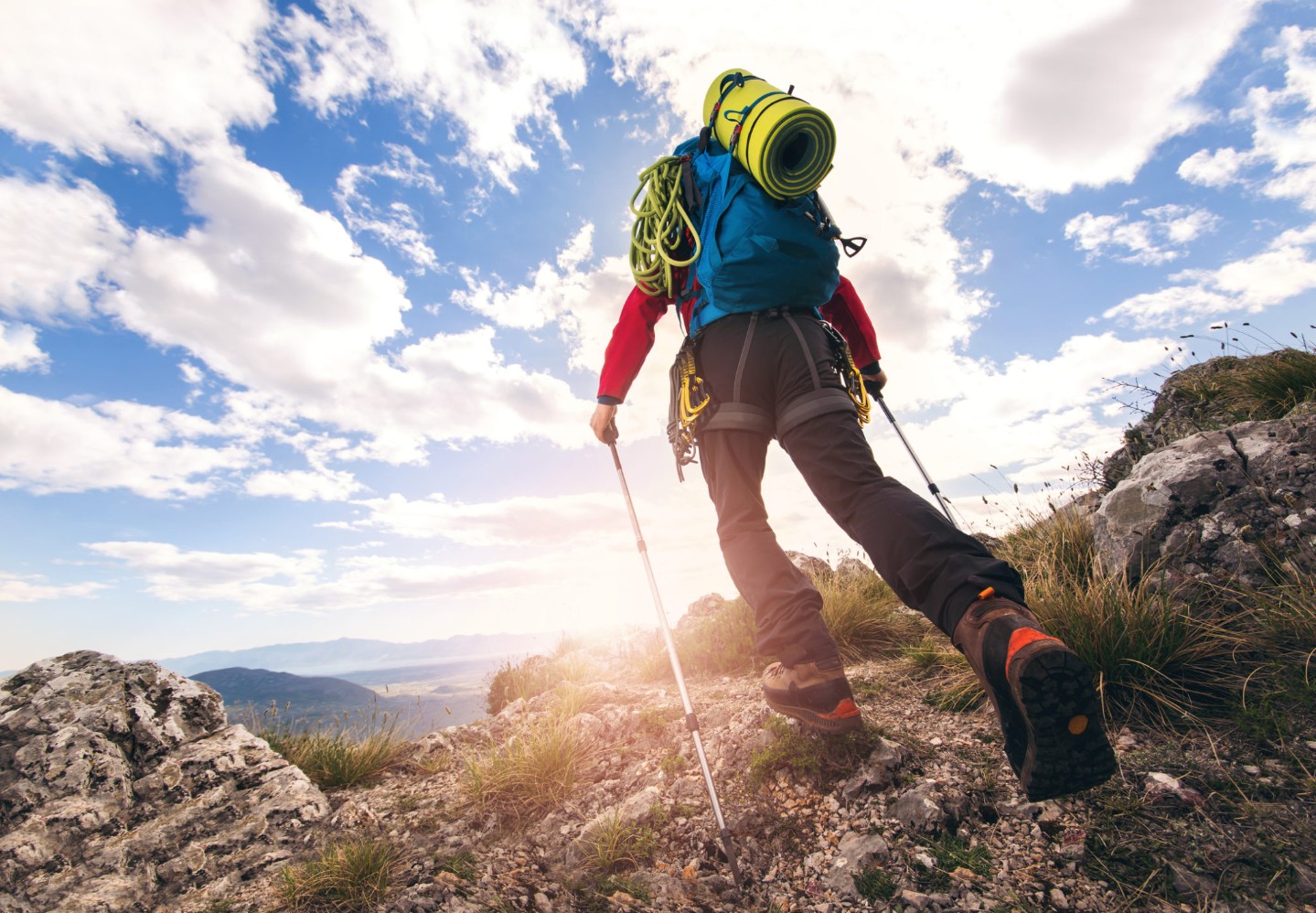Lovely weather were having, great for a hike
I’ve been thinking a lot about exercise lately. This is probably the product of a mild, outdoor-friendly summer here in Omaha that has allowed me and many others to spend more time staying active in the unseasonably cool breezes. I’ve also had the opportunity to engage in a couple of extraordinary summer activities that I’ve particularly enjoyed.
This last week I took a trip to the high mountains of Colorado with my brother for a few days of biking and hiking. The landscape around Breckenridge is absolutely breathtaking, both figuratively and literally. At over 9,000 feet the air on Main Street is thin enough that an “oxygen bar” recently popped up between the souvenir shops and outdoor outlets. The mountain bike trails routinely rise to over 11,000 feet and pose a challenge to even the most ardent cycling enthusiasts. The highlight of my trip was our ascent to the top of one of Colorado’s “fourteeners.” Quandary Peak is one of the higher mountains in the state at about 14,200 feet but represents one of the relatively easier ascents and is well suited as a day hike for non-mountaineering mortals like me. The last thousand feet of the climb had me gasping for air and seeking out every oxygen molecule my lungs could find. At the top we were treated to a couple of mountain goats effortlessly bounding from rock to rock like kids on a playground.
As I sat at the top of the world gnawing on my flattened peanut butter and jelly sandwich I thought about how fortunate I am to be able to witness the extraordinary vistas and revel in the triumph of a thigh-searing climb. Of course, I wasn’t the only one resting among the rocks of the peak—since Quandary is a non-technical ascent many others were up there to lay claim to victory over one of the famed fourteeners. There were men, women, children, grandparents and pooches up there, all panting away in the thin air. The only thing we all had in common was the ability to keep putting one foot in front of the other up the craggy climb. Most didn’t look like athletes, just people who’d kept themselves active enough to spend a day pretending to be Sir Edmund Hillary.
On one of my bike rides I met an older man, probably in his late sixties, who was furiously pedaling up a rocky trail near the top of one of the more challenging climbs. He and I chatted for a while as we caught our breath and I couldn’t help noticing his thin frame and muscular, sinewy legs. He told me he rides a couple of times a week and has done so for decades. I let him take off in front of me because I didn’t want to risk having the septuagenarian overtake me farther up the trail.
RAGBRAI is fun, but it's also work
Earlier in the week I had the opportunity to ride the first day of RAGBRAI (which, if you’ve never heard of this, is the “Sturgis” of the bicycling world, a massive migration of cyclists across the state of Iowa). I don’t know the exact number, but I imagine there were at least ten thousand people of all makes and models pedaling the fifty-some miles from Council Bluffs to Red Oak during the first stage. Again, I was impressed by the number of AARP members who managed to breeze through the course.
It got me wondering. How much work does it take to keep yourself fit enough to be able to take a bike ride in the mountains or climb a peak after you retire? What do you need to do on a daily basis to be able to enjoy the thrills of outdoor life even when you are in your Medicare years?
I’ve long believed that the way you feel when you are 70 or 80 depends on decisions you make when you are 30 or 40. If you start letting yourself slip in your thirties it’ll take a Herculean effort to whip your sagging body back into shape twenty years later. The natural tendency for the human machine is to deteriorate with each year past the age of about 35. At that point your body is a lot like a person on a downward escalator—if he puts in no effort and stands still he’ll gradually descend.
But premature decay isn’t inevitable. Numerous studies have proven that the human body can retain its performance for decades past its prime, but only with constant, vigorous activity. If you create and sustain exercise habits at age 30 you stand a pretty good chance of keeping up with your grandchildren years later, even if it’s to the top of a mountain peak. And it doesn’t take all that much—a couple hours a week of aerobic activity will get you there.
As a kid I lived in Utah at the base of an 11,700-ft. mountain I used to hike nearly every summer. The climb up Mt. Timpanogos covers about 7 miles and 3,200 feet of ascent. Once, at the top, I met a man in his late eighties who told me that he had climbed the mountain every summer since he was ten years old with the exception of a couple of years during WWII. I was amazed then, and even more amazed now.
Older people who have kept themselves fit are my idols and I want to follow their lead by not giving in to age before I have to. I want to keep marching up that down-going escalator as long as my legs will allow and not miss out on the adventures of the world just because I can’t get my body to cooperate. But to do that twenty years from now I’ve got to start today.





